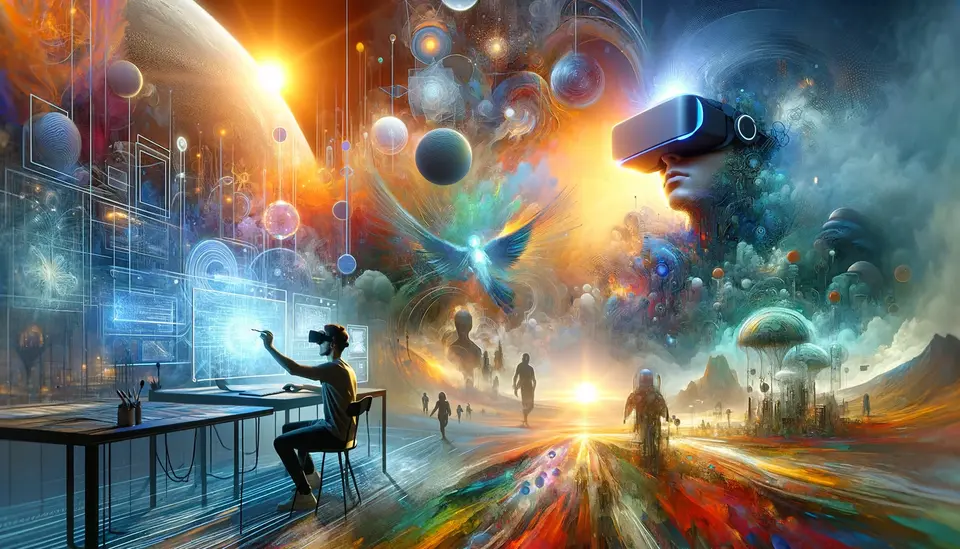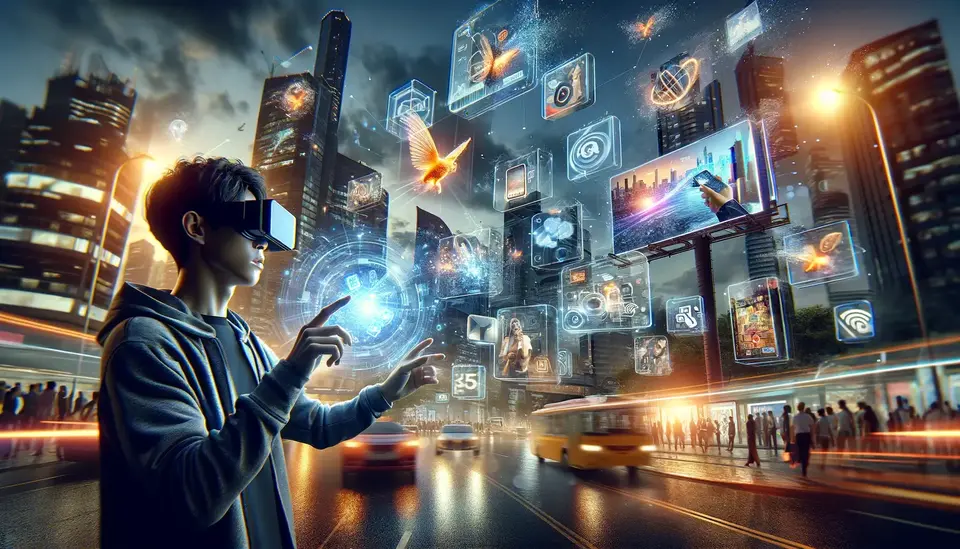Benefits of Virtual Reality (VR) for Advertising
Posted on May 21, 2023 4 minutes 775 words
Table of contents
The advertising industry is constantly evolving, and Virtual Reality (VR) is one of the latest breakthroughs poised to revolutionize how brands communicate with their audiences. VR has the potential to create immersive and personalized experiences that can drive user engagement and offer valuable insights. This blog post will explore the benefits of using VR for advertising and provide examples of how this cutting-edge technology is transforming the industry.
Immersive and Engaging Experiences
One of the most significant advantages of VR is its ability to create immersive experiences that fully engage users. By transporting audiences into virtual worlds, advertisers can create unique and memorable experiences that leave lasting impressions. This immersive quality can lead to increased brand recognition, better retention of advertising messages, and stronger emotional connections between users and brands.
For example, Volvo’s VR test drive campaign allowed users to virtually experience driving a Volvo XC90, which resulted in higher engagement and increased interest in the brand. Similarly, Coca-Cola created a VR experience for the 2014 FIFA World Cup, where users could virtually enter the stadium and participate in the event, strengthening their association with the brand.
Personalized and Interactive Content
VR advertising enables brands to create customized experiences tailored to each user’s preferences and interests. This personalization can make advertisements more relevant, resonating with users on a deeper level. Furthermore, VR allows for interactive elements, such as gamification or branching narratives, which can increase user engagement and satisfaction.
For instance, the New York Times’ VR app features tailored news content based on users’ interests, while Marriott Hotels created a personalized VR experience for their loyalty program members, offering virtual tours of their dream vacation destinations.
Data-Driven Insights
By incorporating VR into their advertising strategy, brands can collect valuable user data, such as gaze tracking, interaction patterns, and time spent in the virtual environment. This information can provide deep insights into consumer preferences and behavior, allowing advertisers to optimize their campaigns and achieve better results.
The data collected from VR experiences can help brands identify which elements are most engaging, the most effective messaging strategies, and which user segments respond best to specific types of content. These insights can then be used to inform future campaigns and increase ROI.
Cost-Effective and Scalable Solutions
Although VR technology may require an initial investment, it can be a more cost-effective solution than traditional advertising methods, such as print or television ads. Once a VR experience is developed, it can be easily distributed across various platforms and reach a wider audience without the need for additional production costs.
Moreover, VR advertising can be more accessible to smaller businesses, as advancements in technology have led to more affordable VR headsets and development tools. This democratization of VR technology enables even smaller brands to create and distribute immersive advertising experiences.
Unlocking New Creative Possibilities
VR provides a unique platform for advertisers to experiment with innovative storytelling techniques and push the boundaries of traditional advertising. With the ability to create immersive, 3D environments, brands can captivate their audiences and develop memorable experiences that stand out in a saturated advertising landscape.
For example, Samsung’s VR campaign for their Galaxy S7 smartphone allowed users to explore a virtual world filled with interactive elements, creating a sense of adventure and discovery. This innovative approach to advertising helped to differentiate Samsung’s brand and generate buzz around their product.
Building Brand Communities
VR can facilitate the creation of virtual spaces where consumers can engage with brands and other users, fostering a sense of community and brand loyalty. These virtual spaces can serve as platforms for brands to host events, provide exclusive content, or offer customer support.
A great example of this is how L’Oreal Paris created a virtual reality beauty shop, where users could explore the store, attend virtual makeup masterclasses, and interact with other customers. This immersive experience helped to build a sense of community around the brand and deepen customer relationships.
Environmental Sustainability
Embracing VR advertising can contribute to a brand’s sustainability efforts, as it reduces the need for physical materials and transportation associated with traditional advertising methods. By creating virtual experiences, brands can minimize their environmental footprint and appeal to eco-conscious consumers.
Conclusion
In conclusion, Virtual Reality has the potential to revolutionize the advertising industry, offering immersive, personalized, and data-driven experiences. By exploring the benefits of VR advertising, brands can stay ahead of the curve and create memorable, impactful campaigns that resonate with their target audiences. As VR technology continues to advance and become more accessible, it’s the perfect time for advertisers to embrace this powerful tool and unlock the future of advertising.








